Getty Artists Program
The Getty Artists Program (GAP) is part of the J. Paul Getty Museum's ongoing invitation to contemporary artists to respond to and engage with the Getty's collection, site, and public through the development of compelling and transformative programs.
Through the Getty Artists Program, the Museum's Department of Education, Public Programs, and Interpretive Content (EPPIC) invites Los Angeles-based artists to engage in yearlong collaborations, investing in meaningful, co-creative work that engages diverse communities both intellectually and emotionally with the Museum and greater culture.
This vital, multi-year initiative was launched in 2010 with celebrated artist Mark Bradford and continues to foster innovative collaborations with notable contemporary artists including Jennifer Steinkamp, [re]vision (2011), John Divola, Digital Scavenger Hunt (2012), Sam Durant, What #isamuseum? (2013), Barbara Kruger, Whose Values? (2014/15), and Harry Gamboa Jr., See What You Mean (2016/17).
Through the Getty Artists Program, the Museum's Department of Education, Public Programs, and Interpretive Content (EPPIC) invites Los Angeles-based artists to engage in yearlong collaborations, investing in meaningful, co-creative work that engages diverse communities both intellectually and emotionally with the Museum and greater culture.
This vital, multi-year initiative was launched in 2010 with celebrated artist Mark Bradford and continues to foster innovative collaborations with notable contemporary artists including Jennifer Steinkamp, [re]vision (2011), John Divola, Digital Scavenger Hunt (2012), Sam Durant, What #isamuseum? (2013), Barbara Kruger, Whose Values? (2014/15), and Harry Gamboa Jr., See What You Mean (2016/17).
Harry Gamboa Jr.
See What You Mean, 2016/17
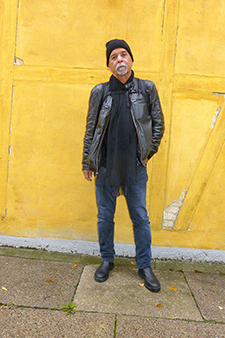
|
|
Artist Harry Gamboa Jr., the 2016/17 Getty Artist Program invitee, is an internationally recognized essayist, photographer, director, and performance artist. Since co-founding the influential art collective Asco in 1972, Gamboa has been creating work that documents and interprets the contemporary urban Chicano experience.
Skillfully employing humor, satire, guerilla tactics, and counter-intuitive strategies in his practice, Gamboa moves deftly across and between media as he explores the shifting realities of power, access, race, culture, education, celebrity, and wealth.
For the Getty, Gamboa created See What You Mean, focusing his keen eye and irreverent sensibilities on the production of live, impromptu actions and public events that reorient and re-contextualize the Getty site, the Museum's collections, and the urban landscape of Los Angeles.
On October 28, Gamboa presented a free public event where he and an array Los Angeles artists and creatives recast the Museum as a playing field, protest site, and place for communal art-making as part of the Pacific Standard Time: Los Angeles/Latin America initiative.
Visit Getty360 for more event information
Over the yearlong residency, Gamboa also worked with over 40 young adults and college students from across Los Angeles, casting student performers, seasoned professionals, and five notable paintings from the Museum's collection as characters in surreal visual melodramas known as fotonovelas – or photo-stories. These fotonovelas offer a playful platform for addressing more serious questions, which have resonance with individuals and cultural institutions alike. For example: What elevates us? What separates us? How does context inform ideas of access and identity? How can humor destabilize authority?
Gamboa notes, "The ability to effectively articulate ideas and to 'connect the dots' between personal and social reality is important for young people to master in this period of complex expectations. Sometimes, life imitates art, but most often art investigates the hidden layers of what makes life so meaningful."
Skillfully employing humor, satire, guerilla tactics, and counter-intuitive strategies in his practice, Gamboa moves deftly across and between media as he explores the shifting realities of power, access, race, culture, education, celebrity, and wealth.
For the Getty, Gamboa created See What You Mean, focusing his keen eye and irreverent sensibilities on the production of live, impromptu actions and public events that reorient and re-contextualize the Getty site, the Museum's collections, and the urban landscape of Los Angeles.
On October 28, Gamboa presented a free public event where he and an array Los Angeles artists and creatives recast the Museum as a playing field, protest site, and place for communal art-making as part of the Pacific Standard Time: Los Angeles/Latin America initiative.
Visit Getty360 for more event information
Over the yearlong residency, Gamboa also worked with over 40 young adults and college students from across Los Angeles, casting student performers, seasoned professionals, and five notable paintings from the Museum's collection as characters in surreal visual melodramas known as fotonovelas – or photo-stories. These fotonovelas offer a playful platform for addressing more serious questions, which have resonance with individuals and cultural institutions alike. For example: What elevates us? What separates us? How does context inform ideas of access and identity? How can humor destabilize authority?
Gamboa notes, "The ability to effectively articulate ideas and to 'connect the dots' between personal and social reality is important for young people to master in this period of complex expectations. Sometimes, life imitates art, but most often art investigates the hidden layers of what makes life so meaningful."
Barbara Kruger
Whose Values?, 2014/15
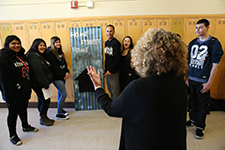
|
|
See the Whose Values? installation created by over 400 participating high school students.
Artist Barbara Kruger, the 2014/15 Getty Artists Program invitee, is internationally renowned for her large-scale and immersive image, text, and video installations that address provocative social, cultural, and political issues.
For her project, Whose Values?, Kruger joined forces with LAUSD Title I High Schools, specifically 400 students from Grover Cleveland High School's Humanities Magnet and Academy of Art and Technology, as well as Chatsworth High School's Humanitas Academy of Education and Human Services.
Working with students, teachers, and Getty staff, Kruger engaged in an extensive series of classroom discussions and activities supporting critical thinking as well as collaborative art and writing projects to investigate core curricular themes of social justice, identity, race, gender, and advocacy.
"The Getty Artists Program is an opportunity for me to encourage students to try to visualize, musicalize, and textualize their experience in the world," says Kruger. "I know that this creation of commentary can change lives, encourage ambition, and suggest the pleasure of learning."
The resulting installation at the Getty Center (May 5–August 2, 2015) culminates this artist residency and highlights the students' collaborative and creative visualization of the Kruger's thought-provoking questions: Whose Values? Whose Justice? Whose Fears? Whose Hopes?
Artist Barbara Kruger, the 2014/15 Getty Artists Program invitee, is internationally renowned for her large-scale and immersive image, text, and video installations that address provocative social, cultural, and political issues.
For her project, Whose Values?, Kruger joined forces with LAUSD Title I High Schools, specifically 400 students from Grover Cleveland High School's Humanities Magnet and Academy of Art and Technology, as well as Chatsworth High School's Humanitas Academy of Education and Human Services.
Working with students, teachers, and Getty staff, Kruger engaged in an extensive series of classroom discussions and activities supporting critical thinking as well as collaborative art and writing projects to investigate core curricular themes of social justice, identity, race, gender, and advocacy.
"The Getty Artists Program is an opportunity for me to encourage students to try to visualize, musicalize, and textualize their experience in the world," says Kruger. "I know that this creation of commentary can change lives, encourage ambition, and suggest the pleasure of learning."
The resulting installation at the Getty Center (May 5–August 2, 2015) culminates this artist residency and highlights the students' collaborative and creative visualization of the Kruger's thought-provoking questions: Whose Values? Whose Justice? Whose Fears? Whose Hopes?
Sam Durant
What #isamuseum?, 2013
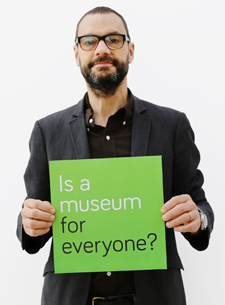
|
|
Sam Durant, the 2013 Getty Artists Program invitee, is a multimedia artist whose work explores the relationships between politics and culture. His socially engaged practice addresses subjects as diverse as the civil rights movement, southern rock music, and modernism.
For his project, What #isamuseum?, Durant continues to investigate these ideas by engaging museum visitors and staff in an exploration of the roles and functions of a museum. Through a call-and-response format, visitors discover a series of artist-designed questions placed in unexpected locations throughout the Getty Center. With these questions, Durant invites reflection on and a response to the expectations and preconceptions of what a museum is. Individual responses can be shared on isamuseum.org, and visitors can input their answers at an iPad hub site located in the Museum Entrance Hall. Social-media outlets, such as Twitter, Facebook, and the Getty Voices project, also serve as channels to discuss the questions and broaden the discourse.
According to Durant, "By expanding the conversation and encouraging different forms of response, participants can become active within the project and even change the debate around the initial issue."
For his project, What #isamuseum?, Durant continues to investigate these ideas by engaging museum visitors and staff in an exploration of the roles and functions of a museum. Through a call-and-response format, visitors discover a series of artist-designed questions placed in unexpected locations throughout the Getty Center. With these questions, Durant invites reflection on and a response to the expectations and preconceptions of what a museum is. Individual responses can be shared on isamuseum.org, and visitors can input their answers at an iPad hub site located in the Museum Entrance Hall. Social-media outlets, such as Twitter, Facebook, and the Getty Voices project, also serve as channels to discuss the questions and broaden the discourse.
According to Durant, "By expanding the conversation and encouraging different forms of response, participants can become active within the project and even change the debate around the initial issue."
John Divola
Digital Scavenger Hunt, 2012
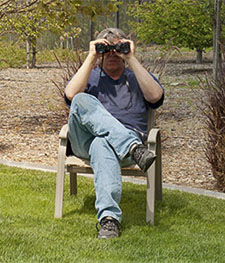
|
|
John Divola, the Getty Artists Program invitee for 2012, works primarily with photography and digital imaging. While he has approached diverse subjects ranging from abandoned houses in his Zuma Series to dogs in Dogs Chasing My Car in the Desert, Divola remains interested in the relationships between the natural and artificial and the abstract and specific.
For his project, Divola devised a digital scavenger hunt in which participants use cameras to capture subjects drawn from the Getty Center site and J. Paul Getty Museum's collections. Engaging multiple audiences—from second graders at Hooper Avenue Elementary to college students at Santa Monica College, East Los Angeles College, College of the Canyons, and Pierce College—this playful and open–ended project provides a unique entrée to the museum experience as well as the practice of photography. Divola remarks: "As photographers we delight in the medium because it generally pulls us out into the world, both literally and figuratively, in a heightened state of awareness. This project presents a straightforward invitation to that process."
The resulting images are assembled to create large–scale collective prints that encourage looking and express multiple, individual engagements. The project ultimately calls into question ideas of authorship and allows a large group of individuals to exhibit at the Museum—and is thus playfully subversive.
For his project, Divola devised a digital scavenger hunt in which participants use cameras to capture subjects drawn from the Getty Center site and J. Paul Getty Museum's collections. Engaging multiple audiences—from second graders at Hooper Avenue Elementary to college students at Santa Monica College, East Los Angeles College, College of the Canyons, and Pierce College—this playful and open–ended project provides a unique entrée to the museum experience as well as the practice of photography. Divola remarks: "As photographers we delight in the medium because it generally pulls us out into the world, both literally and figuratively, in a heightened state of awareness. This project presents a straightforward invitation to that process."
The resulting images are assembled to create large–scale collective prints that encourage looking and express multiple, individual engagements. The project ultimately calls into question ideas of authorship and allows a large group of individuals to exhibit at the Museum—and is thus playfully subversive.
Jennifer Steinkamp
[re]vision: Student works inspired by the Getty collection, 2011
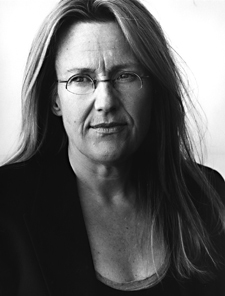
|
|
Jennifer Steinkamp, the Getty Artists Program invitee for 2011, is an internationally acclaimed installation artist who works with new media and video to explore ideas about architectural space, motion, and perception.
For her project, [re]vision, Steinkamp addressed the Museum as a site for exploration and inspiration and chose to work with college audiences. During three school terms, students from the Department of Design | Media Arts at the University of California, Los Angeles, were invited to create animation and design projects in response to the Museum's collection and site. Students chose works of art or aspects of surroundings that they found personally compelling, and through a process of interpretation, adaptation, and revision, created new works.
The resulting student projects were presented at Getty Center's annual College Night on May 2, 2011.
For her project, [re]vision, Steinkamp addressed the Museum as a site for exploration and inspiration and chose to work with college audiences. During three school terms, students from the Department of Design | Media Arts at the University of California, Los Angeles, were invited to create animation and design projects in response to the Museum's collection and site. Students chose works of art or aspects of surroundings that they found personally compelling, and through a process of interpretation, adaptation, and revision, created new works.
The resulting student projects were presented at Getty Center's annual College Night on May 2, 2011.
Mark Bradford
Open Studio: A Collection of Art-Making Ideas by Artists, 2010
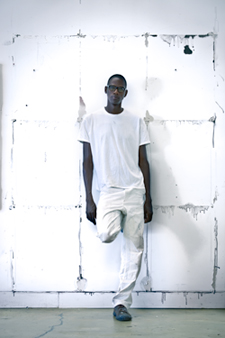
|
|
The program launched in 2010 with Open Studio, a project developed by Los Angeles artist Mark Bradford, a recent recipient of the MacArthur Fellowship. Bradford chose K–12 teachers as his target audience, because he believes that artists should take an active role in providing contemporary-arts education to classrooms. Open Studio is a collection of art-making activities authored by notable national and international artists, including Catherine Opie, Kara Walker, and Xu Bing, who were invited to participate by Bradford and the Museum. These artist-designed materials are posted online, and are thus free and accessible to teachers and students across the country and around the world.